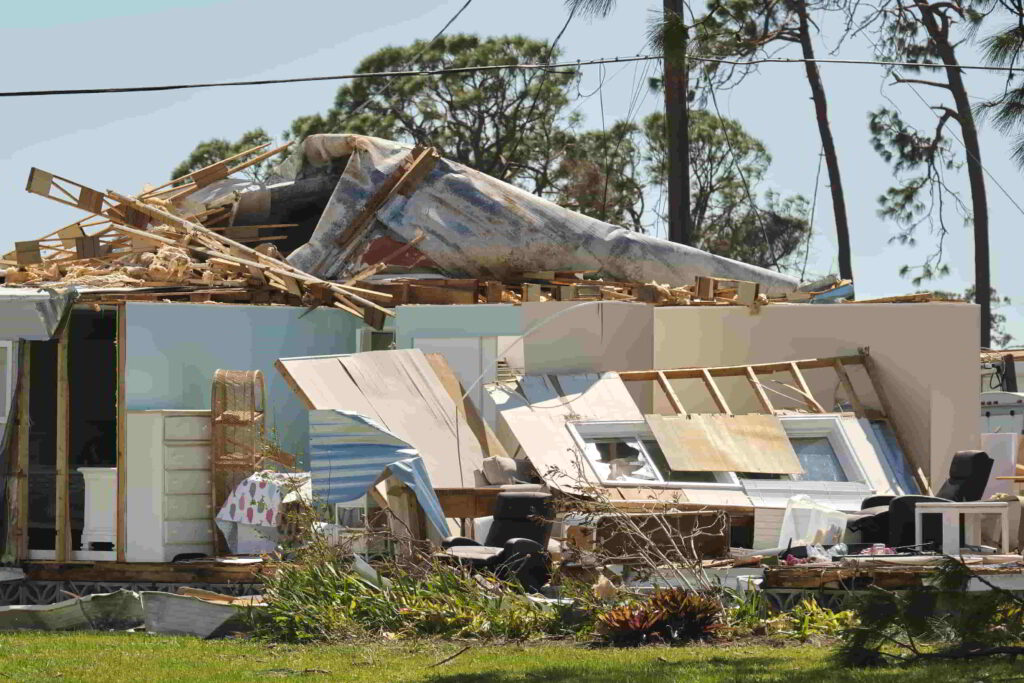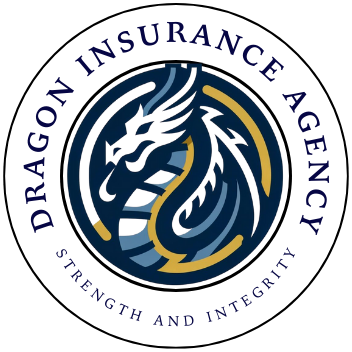Homeownership comes with its fair share of questions—especially when it comes to what’s actually protected under homeowners insurance. Plenty of folks assume it covers everything, but that’s rarely the case. A variation of the question what does homeowners insurance cover pops up frequently, often when something unexpected happens. Dragon Insurance Agency reminds property owners, “Knowing the limits and layers of your coverage can make a world of difference when stress is high and time is tight.”
This discussion breaks down the key protections offered, what’s often excluded, and where optional add-ons step in to fill the gaps.
Understanding What Homeowners Insurance Protects
Anyone who’s filed a claim after storm damage or a kitchen fire knows exactly how important homeowners insurance really is. One client Dragon Insurance Agency helped had water damage that reached the basement drywall and ruined a few expensive tools—they had no idea their policy included that kind of repair.
Policies tend to cover more than people expect, and less than they assume, all at once.
-
Most plans include structural damage to walls, roof, and attached garages
-
Coverage often applies whether damage is from fire, hail, or theft
-
Every policy has caps, deductibles, and fine print worth reviewing
According to the Insurance Information Institute, around 97% of homeowners insurance claims are due to property damage, with wind and hail accounting for nearly 45% of those claims annually.
Dwelling Protection Basics Home Coverage
The structure itself—your house, its walls, roof, windows, and permanent fixtures—gets top priority. If it’s bolted down or built in, it likely falls under this part of the policy. That said, coverage depends on whether it’s a named-peril or open-peril policy, which means protection may only apply to specific types of damage.
-
Roof replacement is often included if it’s damaged by covered weather events
-
Damage from fire, lightning, or vandalism is usually protected under dwelling coverage
-
Rebuilding costs can exceed market value, making replacement cost policies more valuable
FEMA reports that the average cost of repairing or rebuilding after a disaster continues to rise, especially in areas facing repeated severe weather.
Personal Property Insurance Coverage
Furniture, electronics, clothing, and even appliances—those all fall under personal property protection. Whether something is stolen, burned, or broken due to a covered event, this section of the policy helps replace or repair those items. Many don’t realize off-premise losses can sometimes qualify.
-
Belongings may be covered while traveling or stored outside the home
-
Coverage limits for high-value items like jewelry or art are usually lower
-
Keeping an inventory with receipts or photos helps speed up claims
According to the National Association of Insurance Commissioners (NAIC), nearly 60% of homeowners are underinsured when it comes to personal property.
Liability Coverage in Home Insurance
When someone slips on an icy step or a tree limb crashes through a neighbor’s fence, personal liability coverage steps in. This part of homeowners insurance handles legal and medical expenses that could otherwise become personally devastating.
-
Helps pay medical costs if someone is injured on your property
-
Covers legal defense if you’re sued after an accident
-
Includes property damage accidentally caused to others
The Insurance Information Institute states that over $600 million in liability claims were paid out in one year alone, showing how common and costly these situations can be.
Loss of Use Home Insurance Help
When disaster strikes and staying in your house just isn’t possible, loss of use coverage helps with temporary living arrangements. This includes hotels, food expenses, and sometimes even mileage if you’re commuting longer.
-
Pays for short-term lodging while repairs are underway
-
May include meals, laundry, and boarding for pets
-
Coverage applies only when the damage is from a covered event
According to the U.S. Department of Housing and Urban Development (HUD), even temporary displacement can lead to thousands in unexpected costs without this kind of support.
Homeowners Insurance Natural Disasters
Not every storm or natural event falls under a typical homeowners policy. Earthquakes and floods are often excluded. Tornadoes and wildfires? Those are usually covered, depending on your location and the insurance provider.
-
Flood insurance must be purchased separately through FEMA’s NFIP
-
Earthquake coverage is an optional add-on in most states
-
Wildfire coverage varies widely based on regional risk maps
FEMA data shows that just one inch of floodwater can cause more than $25,000 in damage, and yet most Americans don’t have flood insurance.

What Is Not Covered by Homeowners Insurance
Wear and tear, termite damage, and neglect—those won’t get you very far with a claim. Insurance exists for sudden, accidental damage—not ongoing maintenance or preventable problems.
-
Floods, earthquakes, and sinkholes typically excluded
-
Neglected repairs, mold, and pest infestations are the homeowner’s responsibility
-
Business-related damages may require a separate rider or business policy
The Consumer Financial Protection Bureau (CFPB) encourages homeowners to read the declarations page carefully to avoid surprises during a crisis.
Optional Coverage Add Ons Homeowners Insurance
Standard policies don’t always stretch as far as people expect, which is where endorsements and riders come in. Think of them as extras that fill the gaps based on lifestyle or risk.
-
Sewer backup coverage protects against expensive water damage
-
Identity theft endorsements cover restoration and legal fees
-
Valuable item floaters increase protection for jewelry, collectibles, and artwork
According to the Insurance Information Institute, around 20% of homeowners add extended replacement cost coverage to make sure rebuilding costs are fully covered.
How Coverage Limits Affect Claims
Policy limits cap how much an insurer pays out. If damage exceeds those limits, the remaining cost comes out of pocket. That’s why reviewing coverage amounts regularly is smart.
-
Dwelling and personal property have separate coverage caps
-
Certain categories like electronics or firearms often have sub-limits
-
Underinsuring can lead to major financial losses
The National Association of Realtors reports that rising construction costs in recent years have outpaced many older policies’ coverage levels.
Understanding Homeowners Insurance Deductibles
A deductible is the amount paid out-of-pocket before insurance kicks in. Some people choose higher deductibles to lower premiums, but that means bigger expenses when disaster strikes.
-
Deductibles can be flat-rate or percentage-based
-
Wind and hurricane deductibles are often separate and higher
-
Choosing the right deductible balances affordability with risk
FEMA recommends reassessing deductibles annually, especially in disaster-prone regions.
When to Update Your Policy
Life moves fast, and so do home values, renovations, and purchases. Each of those changes could affect coverage. Failing to update a policy might mean coming up short during a claim.
-
Home improvements can increase replacement costs
-
Buying expensive items may exceed existing personal property limits
-
Policy reviews help avoid gaps caused by life changes
According to NAIC, policyholders should review coverage at least once a year, ideally before storm season or after major life events.

Key Takeaways for What Does Homeowners Insurance Cover
Understanding the layers of protection in homeowners insurance is essential. While structural damage, personal property, and liability are standard, not everything is included. Optional add-ons, deductibles, and limits can significantly change how helpful a policy actually is. Dragon Insurance Agency regularly advises clients to review their coverage annually, especially after major purchases or upgrades.
-
Dwelling coverage protects your home’s structure, but rebuilding costs can rise
-
Personal property coverage often needs itemized support for high-value items
-
Liability insurance helps avoid legal or medical bills from on-site accidents
-
Loss of use steps in when living at home isn’t safe
-
Add-ons like flood or sewer backup coverage may be necessary based on location
Frequently Asked Questions
Is flood damage covered by homeowners insurance?
No. Most standard homeowners policies exclude flood damage. Separate flood insurance through the National Flood Insurance Program (NFIP) is usually required.
How often should I review my homeowners insurance policy?
Every year. It’s also wise to review after home renovations, large purchases, or changes in local rebuilding costs.
What’s the average deductible for homeowners insurance?
Most policies carry a deductible between $500 and $2,500. In some regions, percentage-based deductibles apply for wind or hurricane damage.
Are valuables like engagement rings fully covered?
Not always. Most policies cap jewelry claims at a few thousand dollars. Adding a scheduled personal property endorsement offers fuller protection.
Does homeowners insurance cover my home business equipment?
Limited coverage might exist, but it’s often not enough. Business-specific insurance is recommended for proper protection.

